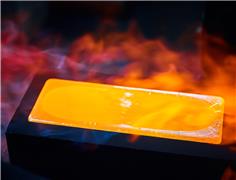- Write by:
-
Monday, July 4, 2022 - 12:39:09
-
415 Visit
-
Print

Mining News Pro - Researchers at the Pacific Northwest National Laboratory (PNNL) are working to increase the conductivity of aluminum, making it economically competitive with copper.
In the scientists’ view, this work opens the door to experiments that, if fully realized, could lead to an ultra-conductive aluminum alternative to copper that would be useful in markets beyond transmission lines, revolutionizing vehicles, electronics, and the power grid.
“What if you could make aluminum more conductive—even 80% or 90% as conductive as copper? You could replace copper and that would make a massive difference because more conductive aluminum is lighter, cheaper, and more abundant,” Keerti Kappagantula, PNNL materials scientist and co-author of the research, said in the media statement. “That’s the big picture problem that we’re trying to solve.”
Kappagantula pointed out that this research came to be as he and his team became aware that copper demand is fast outpacing its current availability, particularly as the EV revolution takes off.
Knowing that aluminum is just one-third the price and weight of copper but that it is only about 60% as conductive, they decided to do something to increase the metal’s conductivity.
“Conductivity is key because a lighter weight wire with equivalent conduction can be used to design lighter motors and other electrical components, so your vehicle can potentially go longer distances,” Kappagantula said. “Everything from a car’s electronics to energy generation to transmitting that energy to your home via the grid to charge your car’s battery—anything that runs on electricity—it can all become more efficient.”
Altering metals’ structure
According to the scientist, for years, it was believed that metals couldn’t be made more conductive. However, it is now known that by altering their structure and introducing the right additives, it is possible to influence metals’ properties.
To begin figuring out just how much aluminum conductivity could be increased, Kappangantula and post-doctoral scholar Aditya Nittala teamed up with David Drabold and Kashi Subedi of Ohio University to identify the effects of temperature and structural defects in aluminum conductivity and develop an atom-by-atom recipe to increase its conductivity.
This type of molecular simulation had never been done for metals before, so the researchers looked at semiconductors for inspiration as previous research had successfully simulated conductivity in these silicon-based materials and some metal oxides.
The team then adapted these concepts to work with aluminum and simulated what would happen to the metal’s conductivity if individual atoms in its structure were removed or rearranged. These tiny changes added up to significant gains in total conductivity.
With a theoretical recipe to alter metal conductivity now clear, the researchers plan to see how much they can increase the conductivity of aluminum in the laboratory to match theory with experimental results. They are also exploring the possibility of increasing the conductivity of other metals using the same simulations.
Short Link:
https://www.miningnews.ir/En/News/621666

A Native American group has asked all members of a US appeals court on Monday to overturn an earlier ruling that granted ...

Codelco is exploring more partnerships with the private sector as Chile’s state copper behemoth looks to recover from a ...

The London Metal Exchange (LME) on Saturday banned from its system Russian metal produced on or after April 13 to comply ...

The world’s coal-fired power capacity grew 2% last year, its highest annual increase since 2016, driven by new builds in ...

Peabody Energy Corp. shares sunk to the lowest in seven months after the biggest US coal miner warned that first-quarter ...

Peru’s Las Bambas copper mine, owned by China’s MMG, is facing renewed blockades of a key transport route after failed ...

Vitol Group confirmed that it’s starting to rebuild a trading book for metals after a long stint out of the market, with ...

Chinese investors are snapping up stocks tied to high-flying metals from copper to gold, aiding an onshore market facing ...

BMO Bank quietly dropped its policy restricting lending to the coal industry in late 2023, helping it avoid being ...
No comments have been posted yet ...